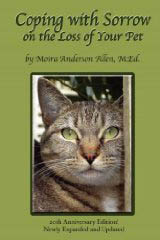 Your Guide to a Successful Writing Career
| |||
|
by Stephen D. Rogers
The characters in your stories are no different. They use humor to bond, to relieve tension, and to heal. No matter how bad a situation, someone is going to try to make light of it. That's only human nature. Just as emergency personnel use humor to cope with the trauma of their work experiences, your characters can use humor to deal with whatever unpleasant circumstances you've thrown at them. Humor provides a necessary relief value when it is safer to laugh than to cry... or to scream.
Humor Increases Tension. Unrelenting tension is not nearly as powerful as tension punctuated by relative calm. When there are peaks but no valleys, the peaks become flat since there is no relative position. Readers quickly grow jaded whenever anything goes on too long. Take the frying pan off the stove. Let your readers relax and lower their guard. Then replace the pan and turn up the heat. Humor works well as a counterpoint to tension because it is engaging and entertaining. The protagonist is not just taking a break, staring off into space, prompting the reader to find something else to do. Humor Increases Brand Identification. Have you ever noticed how many successful characters are described as "sassy"? Some of the most popular characters and authors are popular because of their sense of humor, whether it be hilarious or sarcastic or bleak. Part of the reason that readers become fans is that they like spending time with the character or author, and a sense of humor is a likeable personality trait. Yes, we would all like to right wrongs. Even more, however, we'd all like to think of the perfect quip and actually say it at the time instead of dwelling on a confrontation for two weeks before discovering a comeback in the middle of the night.
Dialogue: There are three ways to talk funny. With internal dialogue, your character may think wisecracks but maintain a respectable front, a contradiction that will create a second level of humor. We can identify with characters who aren't free to speak their mind because we aren't either. Your main character may be the resident wit, the other characters serving as straight men or targets. This is the landscape of satire and you must make certain your character picks on suitable people or you risk alienating the reader. You can have two or more characters who play off each other, cutups who trade putdowns, clowns who keep the laughter rolling. Now you've created a community which isn't as exclusive as the resident wit. Your reader can become one of the gang. Description: Places and things can be described in humorous ways. You can use anything from broad humor (the outcome of the character's first attempt at baking) to social satire (cutting humor that makes a statement). Narration may be driven by the character or the author, depending on the point of view you've selected. Events: Events may develop along oddball lines. Characters may then either respond with laughter or not. While capers are full of funny events, often spiraling madly out of control, almost any story may include a touch of the absurd. Let the events speak for themselves. Don't introduce the funny event with "and then a funny thing happened." Just let it happen. The events don't even have to be funny. A group of people rob a bank. When they run outside, they discover someone stole their getaway car. Neither a robbery nor a car theft is funny in itself. Together, and in that situation, they are.
Comedy Routines. One danger in using humor is using too much. If your story is little more than a series of one-liners, you haven't written a story. You've written a comedy routine. Similarly, don't create a character who doesn't do anything but provide comic relief because the character will break the illusion of reality. Nobody is paid to stand around and do nothing but crack wise. Well, not many people anyway. You don't want readers to be waiting for a punchline. You want them to be engaged by the mystery. Bad Jokes. Before you have your character repeat your favorite joke, make sure it's actually funny. Yes, you can make all the other characters laugh their head off, but you're in trouble if the reader yawns. For one thing, it becomes obvious that a writer is scripting the characters. For another, you're implying the reader doesn't have a good sense of humor. Neither of these things is good. Be conservative when estimating your comic worth. Offending Readers. Humor is subjective. What one person finds funny sends another person on a letter-writing campaign. Pay attention to what is socially acceptable unless you're writing for a specific audience and don't mind alienating the rest. Protagonists who make fun of everybody become antagonistic. Nobody likes a bully, even one who uses words as weapons. As a general rule, a wit is someone who stands outside and studies a situation, searching for cracks. Readers might not warm to someone with so little an emotional involvement in events. In Closing: Did you hear the one about the mystery author who used humor to improve sales? It's a killer.
This article may not be reprinted without the author's written permission. Stephen D. Rogers has published mysteries in magazines ranging from Plots With Guns to Woman's World, multiple anthologies, and several non-mystery markets. He is a graduate of the Framingham Police Department's Citizen Policy Academy and a member of Mystery Writers of America, Private Eye Writers of America, and the Short Mystery Fiction Society. Visit his website at https://www.stephendrogers.com). |
| ||
| |||




